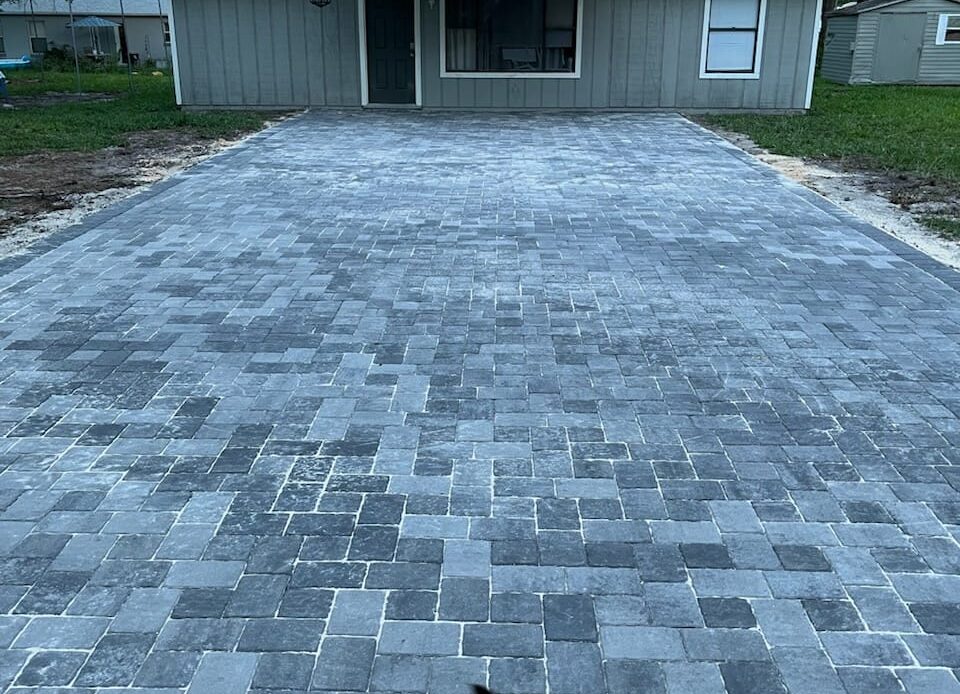Pavers are popular for enhancing outdoor spaces like patios, driveways, and walkways due to their durability and aesthetic appeal. However, over time, homeowners may encounter common issues that can affect both the functionality and appearance of their paver installations. In this guide, we’ll explore these common paver problems and provide practical solutions to address them.
1. Weed Growth Between Pavers
Problem: Weeds sprouting between paver joints can detract from the beauty of your outdoor space and may cause displacement over time.
Solution:
Regular Maintenance: Consistently remove weeds by hand or use a weed puller to prevent them from establishing deep roots.
Apply Polymeric Sand: After thoroughly cleaning the joints, apply polymeric sand between the pavers. When activated with water, this sand hardens to form a barrier that inhibits weed growth.
Seal the Pavers: Sealing creates a protective layer that can reduce weed germination and make maintenance easier.
2. Settling or Sinking Pavers
Problem: Over time, pavers may settle or sink, leading to uneven surfaces that can pose tripping hazards and affect drainage.
Solution:
Assess the Cause: Determine if poor base preparation or drainage issues are causing the settling.
Lift and Relevel: Carefully remove the affected pavers and add or adjust the base material to achieve a level surface. Compact the base properly before reinstalling the pavers.
Improve Drainage: Ensure that water is directed away from the paver area to prevent erosion of the base material.
3. Fading Colors
Problem: Exposure to sunlight, weather, and foot traffic can cause paver colors to fade over time, diminishing their visual appeal.
Solution:
Choose High-Quality Pavers: Opt for pavers with UV-resistant pigments to minimize fading.
Apply a Sealer: Using a UV-resistant sealer can enhance and preserve the pavers’ color while providing additional protection against the elements.
Regular Cleaning: Keep the pavers clean to prevent dirt and debris from dulling their appearance.
4. Loose or Shifting Pavers
Problem: Pavers can become loose or shift due to improper installation, lack of edge restraints, or natural ground movement.
Solution:
Install Edge Restraints: Ensure that sturdy edge restraints are in place to keep pavers from spreading and shifting.
Re-lay Pavers: Remove the loose pavers, check the base for stability, and reinstall them, ensuring they are tightly fitted.
Use Proper Jointing Material: Fill joints with appropriate material, such as polymeric sand, to lock pavers in place.
5. Stains and Efflorescence
Problem: Stains from spills, organic matter, or efflorescence (a white, powdery residue) can mar the appearance of pavers.
Solution:
Immediate Cleaning: Address spills promptly to prevent staining. Use mild detergents and a soft brush for cleaning.
Efflorescence Removal: Clean efflorescence with specialized cleaners designed for pavers, following the manufacturer’s instructions.
Seal the Pavers: Applying a sealer can help prevent stains and make future cleaning easier.
Preventative Measures
To minimize these common paver problems, consider the following preventative steps:
Proper Installation: Ensure that pavers are installed on a well-compacted base with appropriate drainage to prevent settling and shifting.
Regular Maintenance: Schedule routine inspections and cleanings to address minor issues before they become major problems.
Professional Consultation: If you’re unsure about the cause of a problem or how to fix it, consult with a professional landscaper or paver installer for guidance.
By proactively addressing these common paver issues, you can maintain the beauty and functionality of your outdoor spaces for years to come.

